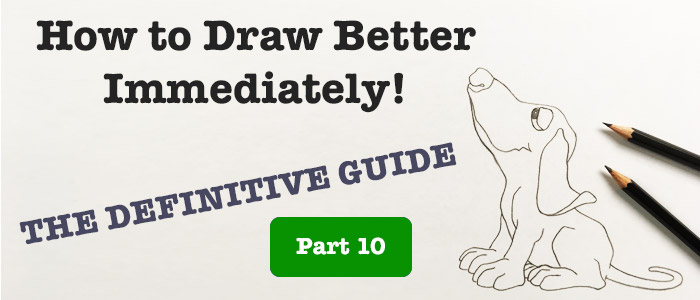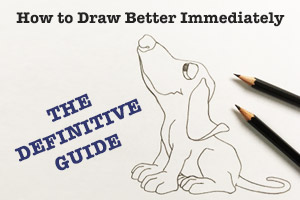
This is part 10 of the series How to Draw Better Immediately – The Definitive Guide.
By combining both of your skills – i.e. comparing sizes and angles – you will find that you are able draw a small shape that is entire and complete. This will likely happen on a more subconscious level, which means that the process may flow and happen spontaneously.
When you are making use of both skills together, these are the sort of thoughts that might come up:
- “Oh, this looks like a snowman with a tiny head… Tiny head and big body.”
- “This looks a bit like a sideways tadpole….tadpole sideways….tadpole.”
- “This is so much like a little yacht sail at a slight angle. Its curved…yacht sail curved…”
- “What a chubby little jelly bean…A jelly bean…”
Notice how I repeat things in these statements; that helps to keep your logical thinking stay on task. It really works, give it a try and you will see. I am sure that you’ll love using this type of Artist’s Language, particularly when drawing abstract and complicated shadow-shapes, where you’re unlikely to be sure of the underlying form – of course the form is what creates the shadow in the first place.
You can refer to shadows and highlight-shapes with whatever words you like, but usually these words will not correspond to what the object actually is. If this were the case, you would end up drawing an abbreviated form of the actual shape which would probably look very little like the image that you had in your mind. The sillier and more playful the names are that you come up with, the better.
Have fun with it! The entire process entertains your logical brain, opening space for playfulness. Your entire mind is then actively involved in the process of learning to draw.
Next: Comparison of Tones


